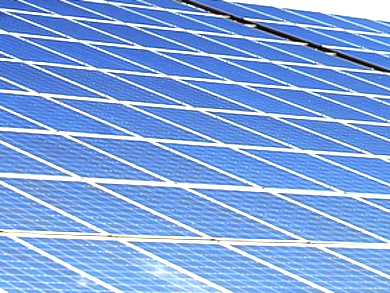In perovskite solar cells (PSCs) with inverted planar heterojunction structures, a polycrystalline perovskite film is sandwiched between a hole- and an electron-extraction layer. PSCs have gained attention because their fabrication is easy, they are compatible with flexible substrates, their energy-band engineering is versatile, and it is possible to fabricate multijunction cells. Their power conversion efficiencies (PCEs) have exceeded 20 %, but are still inferior to those of PSCs with regular structures. This is mainly due to the lower open-circuit voltages (Voc), typically <1.10 V, in comparison with >1.20 V reported for regular PSCs using similar bandgap perovskites. Nonradiative recombination losses inside the perovskite bulk material, as well as at the interfacial contacts, are responsible for this.
Deying Luo and Wenqiang Yang, Peking University, Beijing, China, Zhiping Wang, University of Oxford, UK, and colleagues have developed a strategy to reduce the nonradiative recombination. The team created a technique called Solution-Process Secondary Growth (SSG), which substantially increases the voltage of inverted PSCs. They reached 1.21 V without compromising the quality of the solar cell or the electrical current flowing through a device. The researchers tested the technique on a device which recorded a PCE of 20.9 %. According to the researchers, this is the highest certified PCE for inverted perovskite solar cells recorded so far.
The SSG procedure includes two steps: (i) the preparation of perovskite films by solution processing and (ii) the secondary growth with the assistance of guanidinium bromide (SSG-G). The SSG produces a wider bandgap region near the top surface of the film and a more n-type perovskite film. The researchers make multiple factors responsible for the reduced nonradiative recombination, including
- More n-type perovskite film might result in a larger fraction of occupied versus vacant traps and a reduction in the rate of trap-assisted recombination.
- A wider bandgap near the top surface of the SSG-G film might reduce the total electron-hole recombination rate in this region where surface defects are likely to exist, by making it energetically favorable for one or both charge carriers to stay predominantly within the bulk of the film, away from the surface.
- The presence of guanidinium halide throughout the films and at the surfaces might inhibit unwanted trap-assisted recombination at the heterojunctions by trap passivation.
- Enhanced photovoltage for inverted planar heterojunction perovskite solar cells,
Deying Luo, Wenqiang Yang, Zhiping Wang, Aditya Sadhanala, Qin Hu, Rui Su, Ravichandran Shivanna, Gustavo F. Trindade, John F. Watts, Zhaojian Xu, Tanghao Liu, Ke Chen, Fengjun Ye, Pan Wu, Lichen Zhao, Jiang Wu, Yongguang Tu, Yifei Zhang, Xiaoyu Yang, Wei Zhang, Richard H. Friend, Qihuang Gong, Henry J. Snaith, Rui Zhu,
Science 2018, 360(6396), 1442–1446.
https://doi.org/10.1126/science.aap9282



